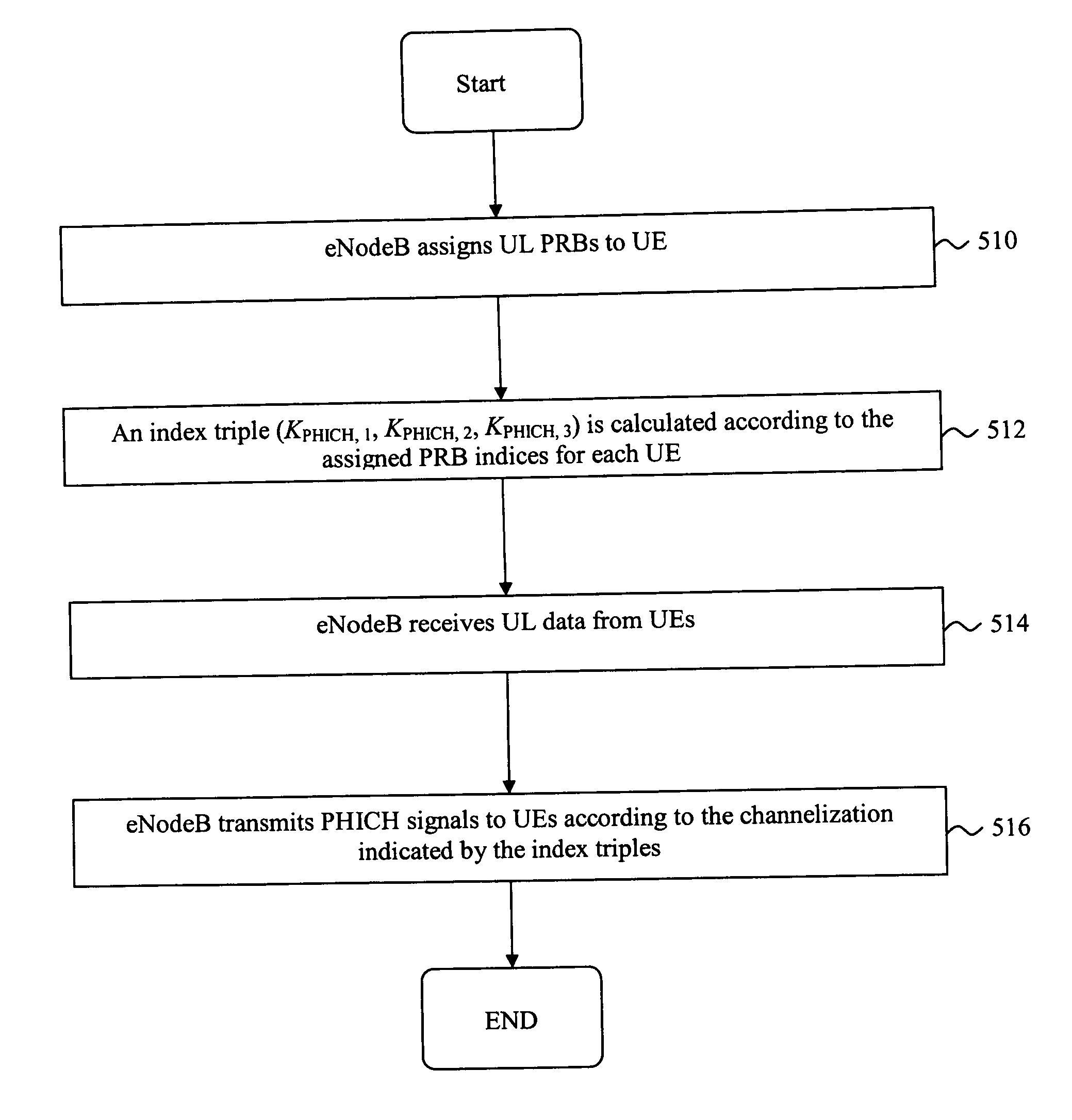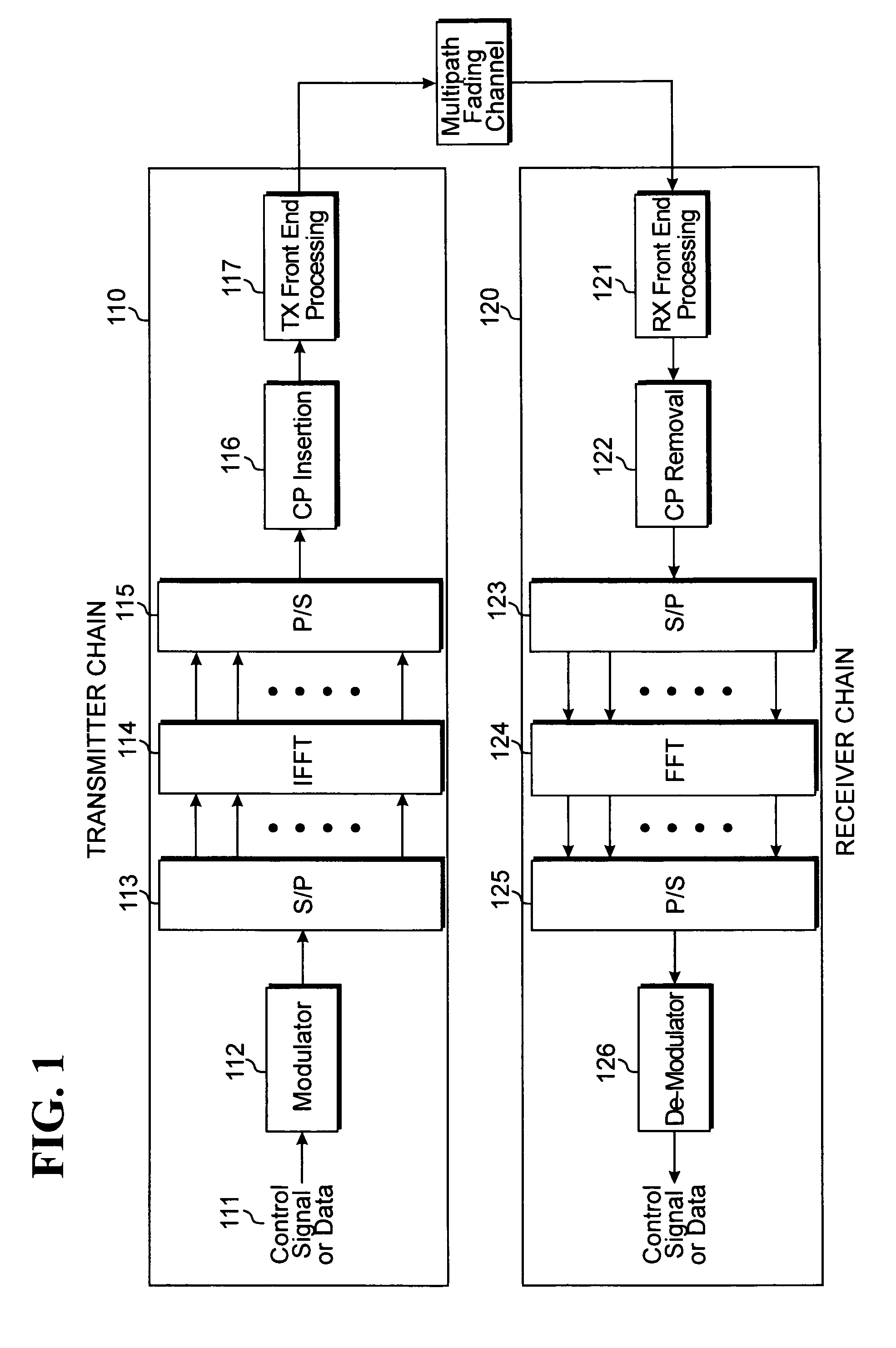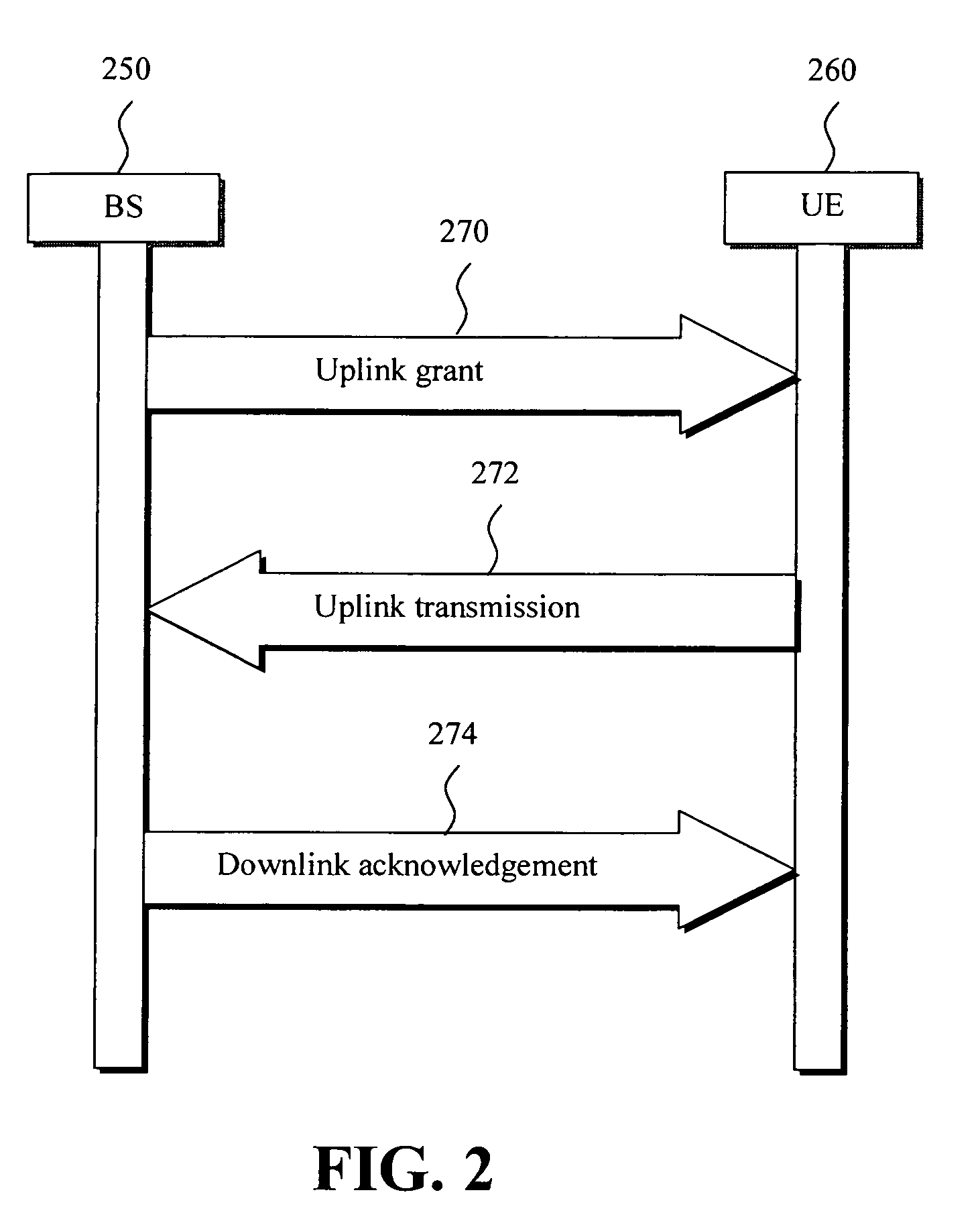Downlink phich mapping and channelization
a technology of channelization and phich mapping, applied in the field of downlink phich mapping and channelization, can solve the problems of i/q leakage problem, ue located closer to enodeb may experience i/q leakage problem, and cannot alleviate i/q leakage problem
- Summary
- Abstract
- Description
- Claims
- Application Information
AI Technical Summary
Benefits of technology
Problems solved by technology
Method used
Image
Examples
first embodiment
[0098]In a first embodiment according to the principles of the present invention, we propose to improve the PHICH channelization as follows. For the three repetitions of each UE's PHICH signal, we assign an index triple, (KPHICH,0,KPHICH,1,KPHICH,2), where KPHICH,i denotes a PHICH index for repetition i of the PHICH signal, for i=0, 1, 2. The values KPHICH,0, KPHICH,1, KPHICH,2 may or may not be the same in our proposal.
[0099]We further propose to assign different index triples, (KPHICH,0,KPHICH,1,KPHICH,2), according to the uplink (UL) Physical resource block (PRB) indices that a UE is assigned.
[0100]A first example of such assignment (denoted as method A) is,[0101]1. If the number of UL PRBs is
[0102]NPHICHPRB=1,[0103] and the PRB index is
[0104]IPRB_RAlowest_index,[0105] then we have:
[0106](KPHICH,0,KPHICH,1,KPHICH,2)=(IPRB_RAlowest_index,IPRB_RAlowest_index,IPRB_RAlowest_index).(6)[0107]2. If the number of UL PRBs is
[0108]NPHICHPRB=2,[0109] and the lower PRB index is
[0110]IPRB_RAl...
second embodiment
[0158]In a second embodiment according to the principles of the present invention, when a cell has both virtual-MIMO UEs and normal UEs (to which a set of PRBs is exclusively assigned to each UE), we may assign index triples (KPHICH,0,KPHICH,1,KPHICH,2) to UEs either utilizing the same method, or different methods for virtual-MIMO UEs and normal UEs. For example, we may utilize method C for assigning index triples to virtual MIMO UEs, and method A for assigning index triples to normal UEs. As a result, a UE needs to know whether it is a virtual MIMO UE or not. One example of obtaining this information at the UE is to add one more bit to Physical Downlink Control Channel (PDCCH) to inform every UE whether the UE is operating in a virtual MIMO mode or not. Another example of obtaining this information at the UE is to assign a first Radio Network Temporary Identifier (RNTI) ID to a UE if the UE is to operate in the virtual MIMO mode, and to assign another RNTI ID to the UE if the UE is...
third embodiment
[0159]In a third embodiment according to the principles of the present invention, for each repetition #i, physical resource index pair
[0160](nPHICHgroup(KPHICH,i),nPHICHseq(KPHICH,i)),
which indicates the PHICH group and PHICH sequence used for the repetition #i, is a function of the KPHICH,i.
[0161]For example, one method of defining this function is,
[0162]nPHICHgroup(KPHICH,i)=(KPHICH,i+nDMRS)modNPHICHgroupnPHICHseq(KPHICH,i)=(⌊KPHICH,i / NPHICHgroup⌋+nDMRS)mod2NSFPHICH,(17)
where nDMRS is the cyclic shift of the DMRS used in the UL transmission for which the PHICH is related, and nDMRS is a parameter obtained by higher layer signaling. For example, nDMRS=0 is a typical use case. For another example, nDMRS is chosen such that no two UEs have the same KPHICH,i in a cell in a time slot, for i=0, 1, 2. We illustrate the linking scheme between the PHICH index KPHICH,i, and the PHICH resource index pair
[0163](nPHICHgroup(KPHICH,i),nPHICHseq(KPHICH,i)),
according to this m...
PUM
 Login to View More
Login to View More Abstract
Description
Claims
Application Information
 Login to View More
Login to View More - R&D
- Intellectual Property
- Life Sciences
- Materials
- Tech Scout
- Unparalleled Data Quality
- Higher Quality Content
- 60% Fewer Hallucinations
Browse by: Latest US Patents, China's latest patents, Technical Efficacy Thesaurus, Application Domain, Technology Topic, Popular Technical Reports.
© 2025 PatSnap. All rights reserved.Legal|Privacy policy|Modern Slavery Act Transparency Statement|Sitemap|About US| Contact US: help@patsnap.com



